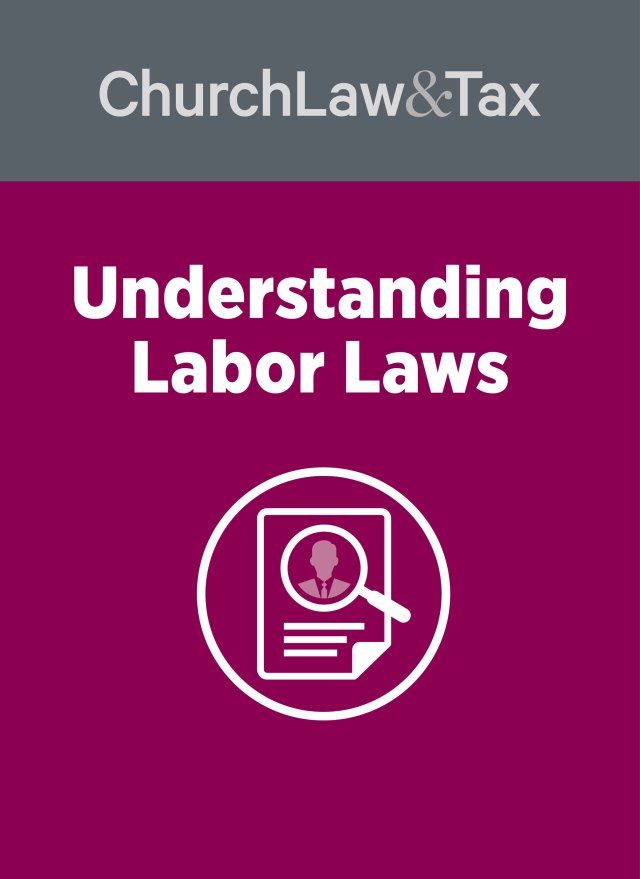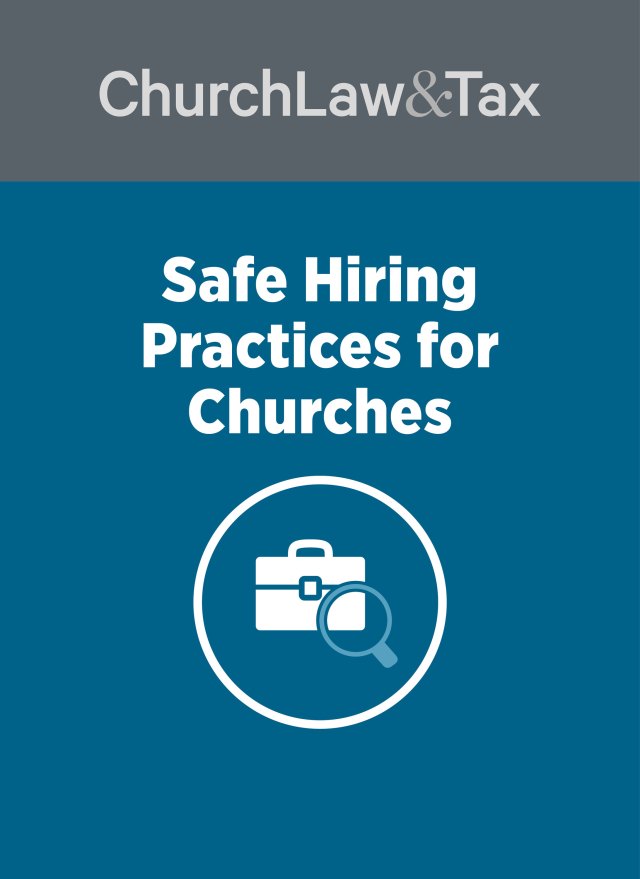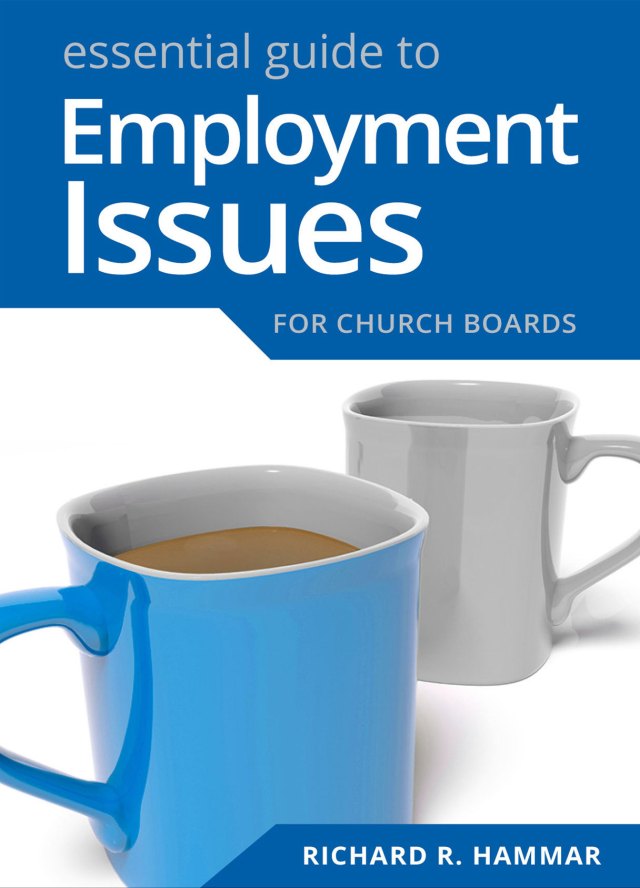• Key point 8-08. Title VII of the CivilRights Act of 1964 prohibits employers engaged in commerce and having at least 15 employees fromdiscriminating in any employment decision on the basis of race, color, nationalorigin, gender, or religion.
• Key point 8-08.1. Title VII of the CivilRights Act of 1964 prohibits employers engaged in commerce and having at least 15 employees fromdiscriminating in any employment decision on the basis of race, color, nationalorigin, gender, or religion. Religious organizations are exempt from theban on religious discrimination, but not from the other prohibited formsof discrimination.
• Key point 8-08.2. Sexual harassment is aform of sex discrimination prohibited by Title VII of the Civil Rights Act of 1964. It consists of both”quid pro quo” harassment and “hostile environment” harassment. Religiousorganizations that are subject to Title VII are covered by this prohibition. Anemployer is automatically liable for supervisory employees’ acts ofharassment, but a defense is available to claims of hostile environmentharassment if they have adopted a written harassment policy and an allegedvictim fails to pursue remedies available under the policy. In some cases,an employer may be liable for acts of sexual harassment committed bynonsupervisory employees, and even nonemployees.
A federal court in North Carolina ruled that the firstamendment did not prevent it from resolving a sexual harassment claim brought by twononminister church employees against their church. A church’s receptionistand the pastor’s secretary (both of whom were female) claimed that thepastor had sexually harassed them, and they sued the church and adenominational agency for damages. The women made a number of allegations in theirlawsuit, including the following: (1) The pastor’s harassment of the receptionistbegan immediately after she started work, although she did not complain at that timebecause she did not want “it to seem like [she] was causing waves,” and shewas afraid she might lose her job. (2) The receptionist later did speakwith the church’s business manager about the harassment, and thebusiness manager confronted the pastor about it. The pastor issued the receptionistan apology and the harassment stopped for about a week. (3) The receptionistalso reported the pastor’s harassment to a denominational officer. (4)The receptionist resigned her employment and submitted a written grievance to herchurch and denominational office. (5) The pastor’s secretary reported thepastor’s harassment to an associate pastor at the church who assured herthat he would “take care of it.” The harassment continued. (6) The pastor’ssecretary spoke with a member of the church’s staff-parish relationscommittee about the harassment, but the harassment continued. (7) The pastor’ssecretary, along with several other female employees in the church office, metwith the church business manager regarding the pastor’s harassingbehavior. Unsatisfied with the business manager’s response to her concerns,the pastor’s secretary submitted her formal grievance to a denominationalofficial. (8) The pastor and church retaliated against the pastor’s secretaryfor reporting the sexual harassment by demoting her to church secretarytwo months after she filed her grievance. (9) The denominationinvestigated the women’s charges, and eighteen months later the pastorvoluntarily resigned his credentials as a minister.
The women’s sexual harassment claim
Title VII of the Civil Rights Act of 1964 prohibits coveredemployers from discriminating against any employee or applicant “with respect tocompensation, terms, conditions or privileges of employment, because of suchindividual’s sex.” Sexual harassment is a form of sex discrimination prohibitedby Title VII. The courts have identified two types of sexualharassment-“quid pro quo” and hostile environment. “Quid pro quo” harassment refers toconditioning employment opportunities on submission to a sexual or socialrelationship, while “hostile environment” harassment refers to the creation of anintimidating, hostile, or offensive working environment through unwelcome verbalor physical conduct of a sexual nature. In general, an employer is liable fora supervisory employee’s hostile environment sexual harassment.
The former receptionist and pastor’s secretary sued the church anddenominational agency claiming that they were responsible for the pastor’srepeated acts of hostile environment sexual harassment since he was a supervisoryemployee. In particular, the women alleged that the church and denomination(1) “failed to take timely and appropriate action to correct the problem and,hence, permitted [the pastor] to continue sexual harassment of theplaintiffs,” and (2) that their failure “to act upon notice of sexual harassmentby one of [their] employees unreasonably interfered with theplaintiffs’ work performance and created an intimidating, hostile, offensive andabusive work environment.” The women asked the court for a permanentinjunction, back pay, compensatory damages for past and future losses, punitivedamages, attorneys’ fees, and costs.
The church’s first amendment defense
The church and denomination argued that any attempt by the civilcourts to review the decisions of religious organizations regarding thesupervision and management of pastors would unconstitutionally interfere withmatters of internal church governance in violation of the first amendmentguaranty of religious freedom. The court acknowledged that “suits in whichministers or those individuals performing ministerial functions challenge theselection, failure to hire, assignment, or discharge decisions of religiousinstitutions are barred by the first amendment.” It further noted that thecourts have applied the church-minister exception “to bar claims brought by layemployees of religious institutions whose primary duties consist of teaching,spreading the faith, church governance, supervision of a religious order, orsupervision or participation in religious ritual and worship.”
On the other hand, the court referred to several cases in which thecivil courts have held that “secular or lay employees who do not performessentially religious functions are protected by Title VII and that religiousinstitutions are not insulated from liability under Title VII or otherantidiscrimination statutes for various forms of discriminatory conduct with respectto such employees.”
Turning to the facts of this case, the court noted that the womenwere “secular, lay employees who performed non-religious, administrativetasks for a religious institution,” and that a resolution of their sexualharassment claim would not violate the first amendment. The court noted that
to establish a claim for hostile environmentsexual harassment under Title VII, a plaintiff employee must prove that (1) the conduct wasunwelcome; (2) it was based on the sex of the plaintiff; (3) it wassufficiently severe or pervasive to alter the plaintiffs’ conditions of employment andto create an abusive working environment; and (4) it was imputable to theemployer. The fourth element requires a plaintiff to demonstrate a factualbasis upon which a harasser’s conduct may be imputed to an employer. Anemployer’s liability for its employee’s sexual harassment of anotherindividual may be premised on the employer’s own negligence. An employer isnegligent with respect to sexual harassment if it knew or should have knownabout the conduct but failed to stop it.
The court concluded that it could decide whether or not the churchand denomination “took some action that was reasonably calculated toput an end to the abusive environment” without any inquiry into religiousdoctrine.
Application. This case is important because it illustratesthe potential liability of churches and denominational agencies for ministers'”hostile environment” sexual harassment. “Hostile environment” harassmentrefers to the creation of an intimidating, hostile, or offensive workingenvironment through unwelcome verbal or physical conduct of a sexual nature.Churches and denominational agencies that are aware (or should be aware)that a pastor is engaging in such behavior will be responsible for it ifthey fail to take appropriate steps to protect employees. It is criticalfor church leaders to comprehend the legal significance of suchknowledge. Finally, the court rejected the claim of the church anddenomination that the first amendment guaranty of religious freedom prevented thecivil courts from resolving the women’s claims. So long as such claims involvenonminister employees and can be resolved without reference to doctrine orpolity, the first amendment does not bar the civil courts from resolvingthem. Smith v. Raleigh District of the North Carolina Conference ofthe United Methodist Church, 63 F.Supp.2d 694 (E.D.N.C. 1999).
© Copyright2000 by Church Law & Tax Report.All rights reserved. This publication is designed toprovide accurate and authoritative information in regard to thesubject matter covered. It is provided with the understanding thatthe publisher is not engaged in rendering legal, accounting, orother professional service. If legal advice or other expertassistance is required, the services of a competent professionalperson should be sought. Church Law & Tax Report, PO Box 1098,Matthews, NC 28106. Reference Code: m43 c0400




